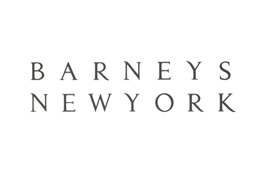Register by Jan 13 to save on passes and connect with marketers from Uber, Bose and more

We already showed you brands trying to capitalize on Sandyc– ugh — but some brands are doing the right thing and lending a helping hand to those in need because of Sandy. These are the kinds of things brands need to do, not promote “Sandy Sales.”
![]() 1. Duracell: The Connecticut-based battery brand sent its Power Forward Community Center and its Rapid Responder truck to New York to help those without power. The Power Forward Community Center, which is stationed in Battery Park, and the Rapid Responder truck, which is roaming around New York and New Jersey, are fitted with charging stations for mobile phones and other devices. Both units also have computers with Internet access for people to use and have free batteries for people. (via Adweek)
1. Duracell: The Connecticut-based battery brand sent its Power Forward Community Center and its Rapid Responder truck to New York to help those without power. The Power Forward Community Center, which is stationed in Battery Park, and the Rapid Responder truck, which is roaming around New York and New Jersey, are fitted with charging stations for mobile phones and other devices. Both units also have computers with Internet access for people to use and have free batteries for people. (via Adweek)
 2. Tide: According to this announcement on Facebook from News 12 New Jersey, starting Nov. 3, the Tide Loads of Hope mobile laundry program will bring its free laundry services to Eatontown, New Jersey to provide free laundry service to people affected by Sandy. The mobile laundromat fleet will be stationed at Lowe’s in Eatontown to wash, dry and fold laundry, free of charge.
2. Tide: According to this announcement on Facebook from News 12 New Jersey, starting Nov. 3, the Tide Loads of Hope mobile laundry program will bring its free laundry services to Eatontown, New Jersey to provide free laundry service to people affected by Sandy. The mobile laundromat fleet will be stationed at Lowe’s in Eatontown to wash, dry and fold laundry, free of charge.
 3. Airbnb: The online lodging booking service is helping its users help those in need of a place to stay post Sandy. Firstly, it is waiving all of its fees for listings in Sandy-affected areas. This means Airbnb is not charging hosts or guests the normal percentage of the listing price that we take as revenue. Secondly, the company is encouraging its listers to offer reduced rates and has enabled a button that allows hosts in affected areas to automatically lower their price and be featured in the Discounted Sandy Listings Wish Lists.
3. Airbnb: The online lodging booking service is helping its users help those in need of a place to stay post Sandy. Firstly, it is waiving all of its fees for listings in Sandy-affected areas. This means Airbnb is not charging hosts or guests the normal percentage of the listing price that we take as revenue. Secondly, the company is encouraging its listers to offer reduced rates and has enabled a button that allows hosts in affected areas to automatically lower their price and be featured in the Discounted Sandy Listings Wish Lists.
 4. Barneys: While we already pointed out Barneys insensitive Sandy shopping email, it looks like the luxury department store wants to give back this time. Starting since Sunday, the Barneys flagship store on Madison Avenue is donate 10 percent of all proceeds to the American Red Cross Hurricane Sandy Relief Effort. Barneys has already pledged a minimum donation of $50,000. (via Racked)
4. Barneys: While we already pointed out Barneys insensitive Sandy shopping email, it looks like the luxury department store wants to give back this time. Starting since Sunday, the Barneys flagship store on Madison Avenue is donate 10 percent of all proceeds to the American Red Cross Hurricane Sandy Relief Effort. Barneys has already pledged a minimum donation of $50,000. (via Racked)
![]() 5. JetBlue: JetBlue is encouraging its customers to donate to the Red Cross by offering 6 TrueBlue points for every $1 a customer donates through Nov. 30. The airline is matching the first $100,000 in donations and is also donating $250,000 to the JetBlue Crewmember Crisis Fund, an independent non-profit that supports JetBlue crewmembers, and will match, dollar for dollar, all crew-member donations to the fund through Nov. 30.
5. JetBlue: JetBlue is encouraging its customers to donate to the Red Cross by offering 6 TrueBlue points for every $1 a customer donates through Nov. 30. The airline is matching the first $100,000 in donations and is also donating $250,000 to the JetBlue Crewmember Crisis Fund, an independent non-profit that supports JetBlue crewmembers, and will match, dollar for dollar, all crew-member donations to the fund through Nov. 30.
 6. Hilton Worldwide: From now until Dec. 31, the hotel brand has partnered with GlobalGiving to give its rewards program members 10 HHonors bonus points for every $1 donated to support Sandy relief efforts. Hilton Worldwide is also matching all donations up to $100,000.
6. Hilton Worldwide: From now until Dec. 31, the hotel brand has partnered with GlobalGiving to give its rewards program members 10 HHonors bonus points for every $1 donated to support Sandy relief efforts. Hilton Worldwide is also matching all donations up to $100,000.
 7. Gap: The clothing brand will donate more than $250,000 worth of clothing to the New Jersey area affected by Sandy. The company will also donate $750,000 to the Red Cross to aid recovery efforts.
7. Gap: The clothing brand will donate more than $250,000 worth of clothing to the New Jersey area affected by Sandy. The company will also donate $750,000 to the Red Cross to aid recovery efforts.
More in Marketing

What does media spend look like for 2026? It could be worse — and it might be
Forecasts for 2026 media spend range from 6.6% on the lower end to over 10% but the primary beneficiaries will be commerce, social and search.

Pitch deck: How Amazon is emerging as the proof layer for TV spend
Amazon is positioning itself to advertisers as the “first-stop shop” for planning, buying, optimizing and measuring TV.

Here are the 2025 brand winners and losers of tariffs
Tariffs completely upended the retail industry in 2025 — and no company was left unscathed.





